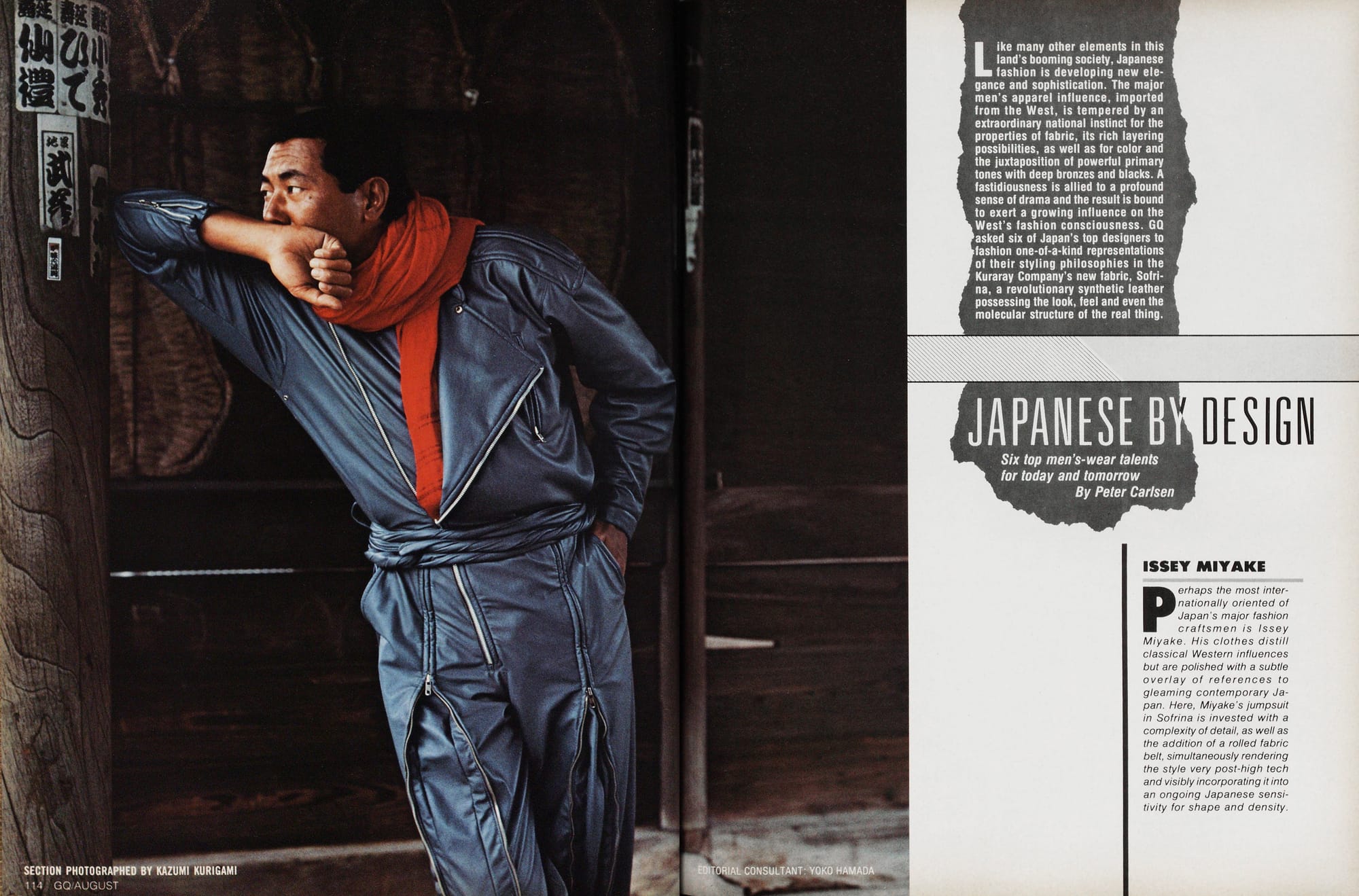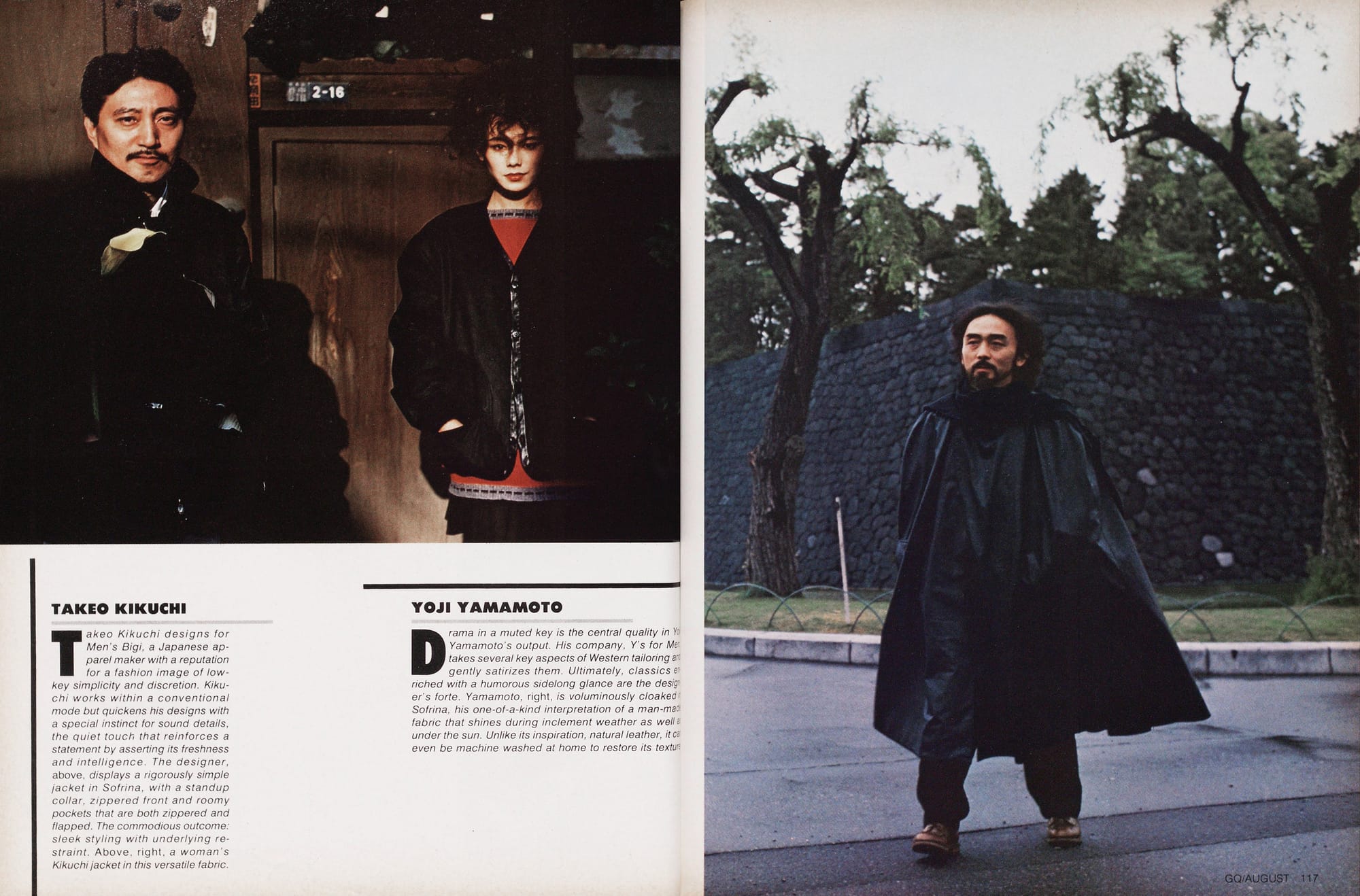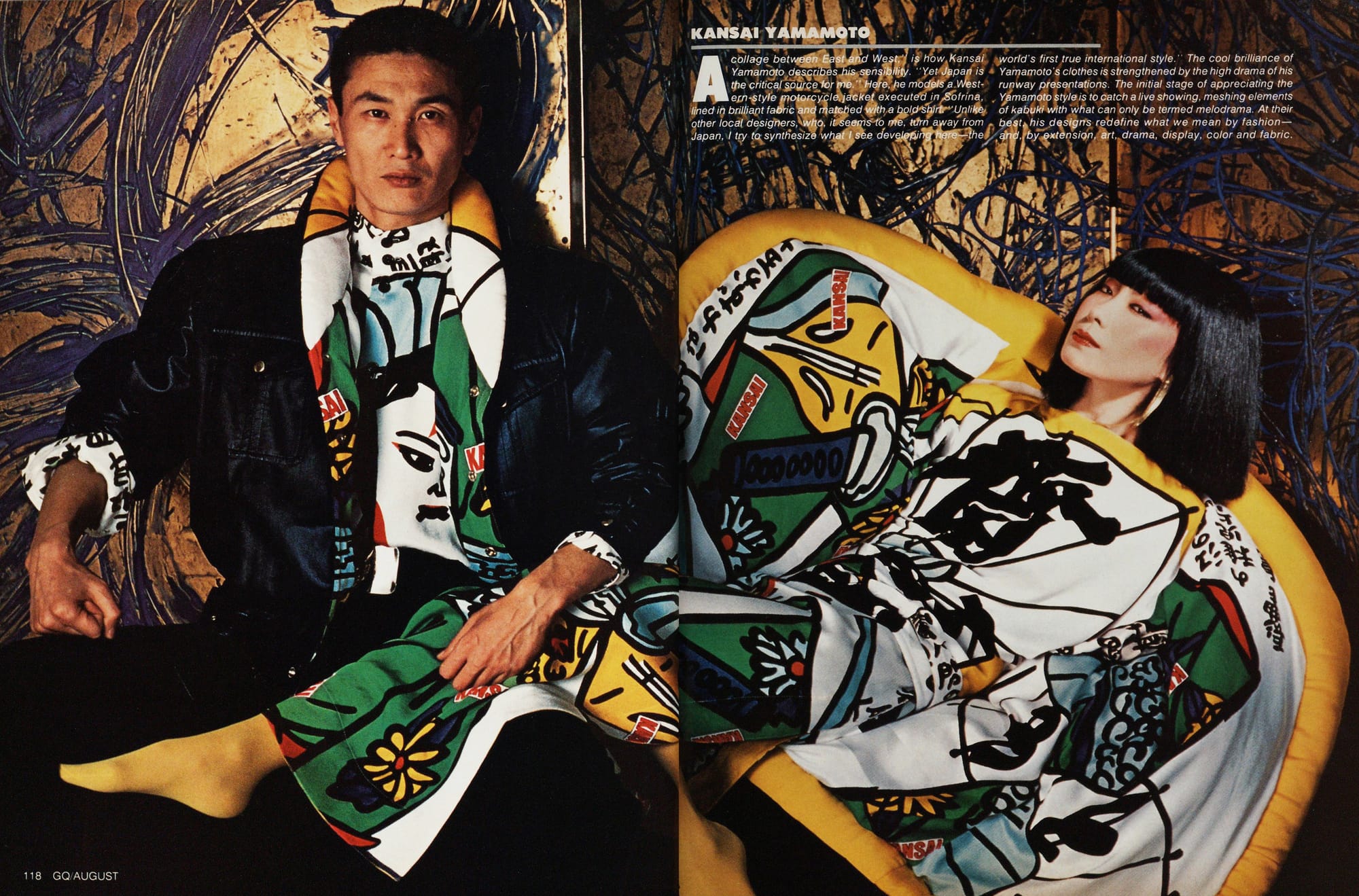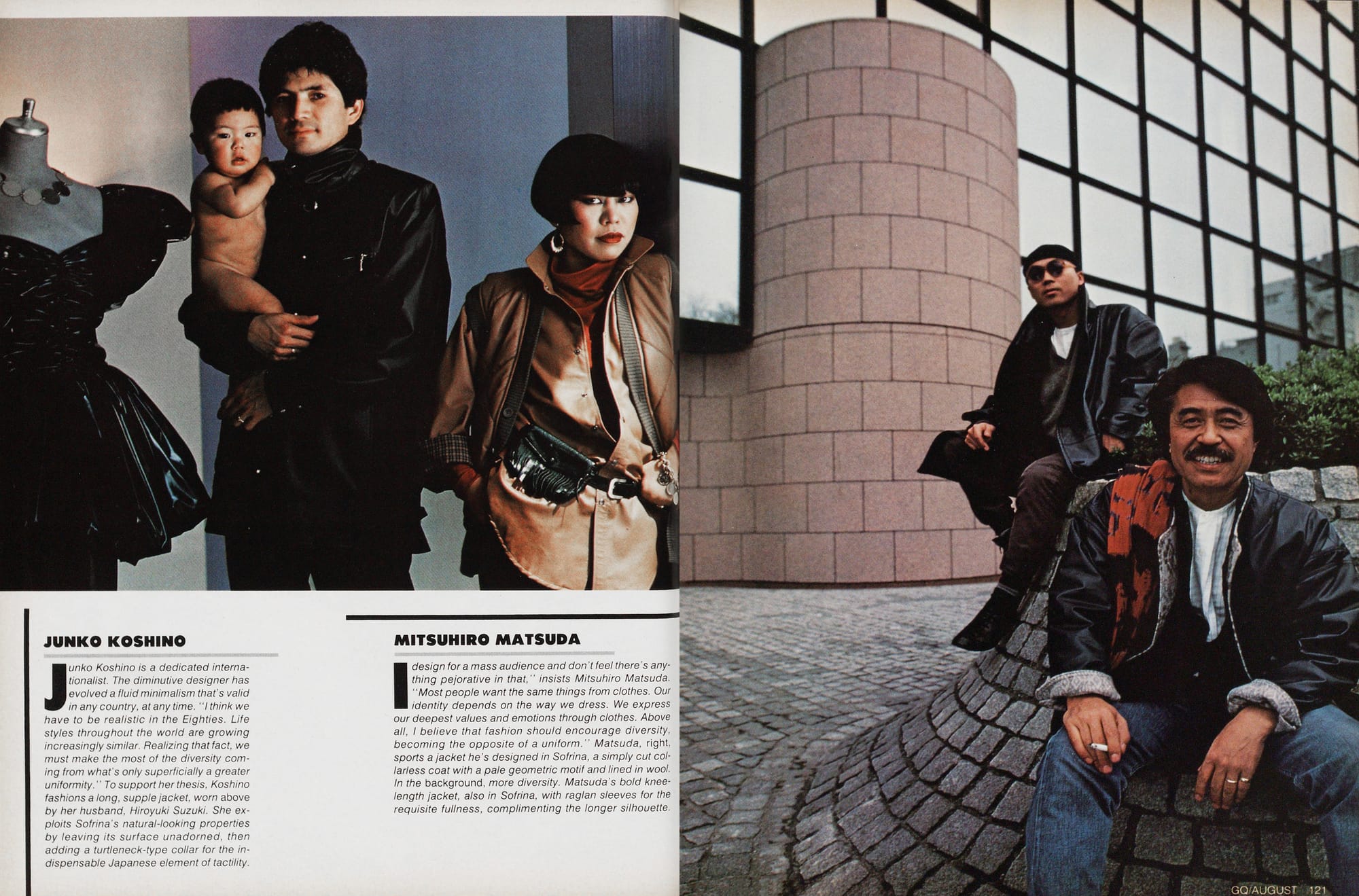'Japanese By Design' - GQ August 1981

Six top men's-wear talents for today and tomorrow.
Writer: Peter Carlsen
Like many other elements in this land's booming society, Japanese fashion is developing new elegance and sophistication. The major men's apparel influence, imported from the West, is tempered by an extraordinary national instinct for the properties of fabric, its rich layering possibilities, as well as for color and the juxtaposition of powerful primary tones with deep bronzes and blacks. A fastidiousness is allied to a profound sense of drama and the result is bound to exert a growing influence on the West's fashion consciousness. GQ asked six of Japan's top designers to fashion one-of-a-kind representations of their styling philosophies in the Kuraray Company's new fabric, Sofri-na, a revolutionary synthetic leather possessing the look, feel and even the molecular structure of the real thing.
Issey Miyake - Perhaps the most internationally oriented of Japan's major fashion craftsmen is Issey Miyake. His clothes distill classical Western influences but are polished with a subtle overlay of references to gleaming contemporary Japan. Here, Miyake's jumpsuit in Sofrina is invested with a complexity of detail, as well as the addition of a rolled fabric belt, simultaneously rendering the style very post-high tech and visibly incorporating it into an ongoing Japanese sensitivity for shape and density.

Takeo Kikuchi - Takeo Kikuchi designs for Men's Bigi, a Japanese apparel maker with a reputation for a fashion image of lowkey simplicity and discretion. Kikuchi works within a conventional mode but quickens his designs with a special instinct for sound details, the quiet touch that reinforces a statement by asserting its freshness and intelligence. The designer, above, displays a rigorously simple jacket in Sofrina, with a standup collar, zippered front and roomy pockets that are both zippered and flapped. The commodious outcome: sleek styling with underlying restraint. Above, right, a woman's Kikuchi jacket in this versatile fabric.
Yohji Yamamoto - Drama in a muted key is the central quality in Yohji Yamamoto’s output. His company, Y’s for Men, takes several key aspects from Western tailoring and gently satirizes them. Ultimately, classics enriched with a humorous sidelong glance are the designer’s forte. Yamamoto, right, is voluminously cloaked in Sofrina, his one-of-a-kind interpretation of a man-made fabric that shines during inclement weather as well as under the sun. Unlike its inspiration, natural leather, it can even be machine washed at home to restore its texture.

Kansai Yamamoto - "A collage between East and West," is how Kansai Yamamoto describes his sensibility. "Yet Japan is the critical source for me." Here, he models a Western-style motorcycle jacket executed in Sofrina, lined in brilliant fabric and matched with a bold shirt." Unlike other local designers, who, it seems to me, turn away from Japan, I try to synthesize what I see developing here-the world's first true international style." The cool brilliance of Yamamoto's clothes is strengthened by the high drama of his runway presentations. The initial stage of appreciating the Yamamoto style is to catch a live showing, meshing elements of kabuki with what can only be termed melodrama. At their best his designs redefine what we mean by fashion-and, by extension, art, drama, display, color, and fabric.

Junko Koshino - Junko Koshino is a dedicated internationalist. The diminutive designer has evolved a fluid minimalism that's valid in any country, at any time. "I think we have to be realistic in the Eighties. Life styles throughout the world are growing increasingly similar. Realizing that fact, we must make the most of the diversity coming from what's only superficially a greater uniformity." To support her thesis, Koshino fashions a long, supple jacket, worn above by her husband, Hiroyuki Suzuki. She exploits Sofrina's natural-looking properties by leaving its surface unadorned, then adding a turtleneck-type collar for the indispensable Japanese element of tactility.
Mitsuhiro Matsuda - "I design for a mass audience and don't feel there's anything pejorative in that," insists Mitsuhiro Matsuda. "Most people want the same things from clothes. Our identity depends on the way we dress. We express our deepest values and emotions through clothes. Above all, I believe that fashion should encourage diversity, becoming the opposite of a uniform." Matsuda, right, sports a jacket he's designed in Sofrina, a simply cut collarless coat with a pale geometric motif and lined in wool In the background, more diversity. Matsuda's bold knee length jacket, also in Sofrina, with raglan sleeves for the requisite fullness, complimenting the longer silhouette.
